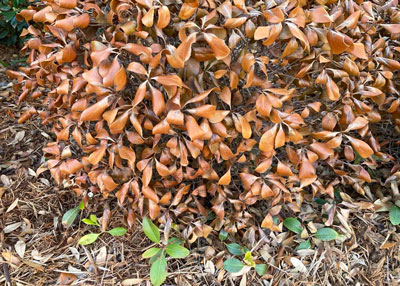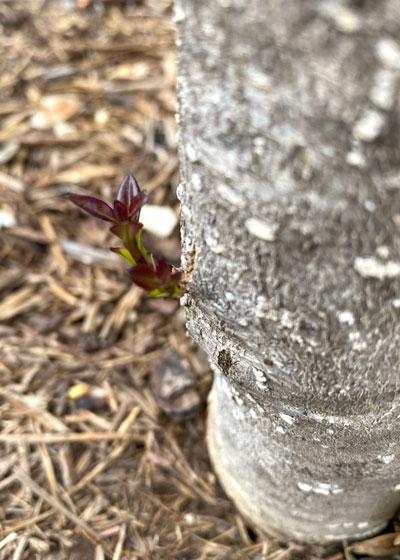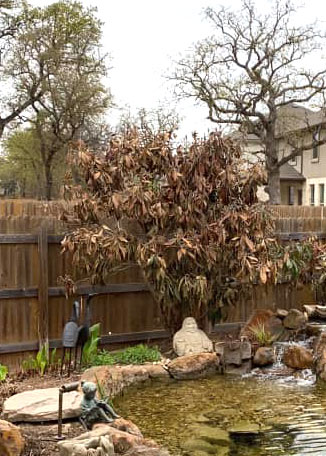Question of the Week – Number Two: March 25, 2021
“Should I just wait for my shrubs to send up new shoots? I see new growth at the bases of the plants.”
Some plants are much better about resprouting than others.
Oleanders do it better than most. When they freeze to the ground, they can hardly wait for spring to return before they start sending up vigorous new growth. In that respect, they act almost like most of our perennial plants.
Crape myrtles Some varieties do about the same thing as oleanders. We’ve planted almost all the 120 known varieties of this great southern favorite in our Crape Myrtle Trails of McKinney.
It gets fairly cold up north in McKinney, and of the taller types, the varieties Natchez, Muskogee, Sioux, Tuscarora and Country Red have a bad habit of freezing to the ground for us. However, they come zooming back the following spring with strong new stems.
The main downside is that we have to retrain them each time. This year we’re wondering if any of the other varieties will follow suit. We will know within a couple of weeks. For now, we are just sitting tight.
Asian jasmine This groundcover also dies back in extreme cold. Its leaves turn milk chocolate brown and the stems become brittle. However, invariably it sends out vigorous new stems from the roots and within a few weeks it looks better than ever. All we have to do is get the old growth out of the way to clean up the plantings.

What about the rest?
So, that leaves us with an extensive list of other plants that have also turned brown in big parts of Texas. Depending on where you are, that list might include:
Pittosporum
Waxleaf ligustrum
Glossy privet
Confederate star jasmine
Carolina jessamine
Pampasgrass
Wax myrtle
Indian hawthorn
Azaleas
Camellias
Loquat
Bottlebrush
Citrus
Sago palms
Palms of all other sorts
Live oaks
Pines
Barberries
Abelias
Elaeagnus
Aralia/Fatsia
Gardenia
Fig ivy
Texas sage
Loropetalum
Golden bamboo
Xylosma
Olives
Pomegranates
Viburnums
Vitex
Beautyberry
Nandina
Soft Caress Mahonia
I did that list off the top of my head, folks. Those are the plants people have been asking about. Enough times that they’re branded into my brain.
And so, when someone says that they’re willing to wait a little longer to see if their plants put out new leaves, I get that. Replacing a list like that would cost an armored truck’s worth of money.

But I also want to caution you that just because a plant hurls out a new bud or two doesn’t mean that you’re going to have a beautiful new specimen anytime soon. It may take it years to look anything like it did before the Great Freeze. That’s assuming it even proceeds with its recovery.

You need to step back a few feet and take a critical study of how good or bad things really look. If you’ve been left with spare parts and remnants, do you really want to look at them for years into the future?
Perhaps this is the year that you need to make some nice changes, and maybe the Big Chillout has given you cause.
I’m just givin’ you the nudge!
